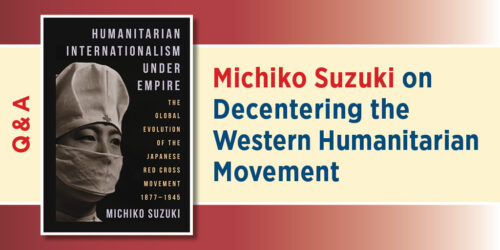Interview with Ami Pedahzur and Arie Perliger, authors of Jewish Terrorism in Israel
The following is an interview with Ami Pedahzur and Arie Perliger, authors of Jewish Terrorism in Israel.
You can also read an interview with Pedahzur discussing his previous book The Israeli Secret Services and the Struggle Against Terrorism or browse the book using Google Preview.
Q: What led you to this topic?
Ami Pedahzur: We have both studied political extremism and violence for many years. Together we have devoted a lot of time to understanding the underlying causes of terrorism in general and of religious terrorism in particular. When former prime minister Ariel Sharon announced his plan to remove Jewish settlements from the Gaza strip, we felt that Israeli society was entering a tense historical moment. Because of this we just wanted to be on the ground, documenting events as they unfolded and trying to understand the mechanisms that lead groups and individuals to extreme manifestations of political violence.
Q: So what are your main conclusions?
AP: This study corroborates the argument that religion by itself is not a source of violence. However, when it becomes politicized, religion can become a fertile breeding ground for countercultures like totalitarian political ideologies such as fascism and communism. Most countercultures never become violent. It takes a major threat to the community of believers or to its most sacred values to radicalize its members. A minority of them will be pushed over the edge and perpetrate terrorist acts for the purpose of removing the threats.
Q: Lately, a lot has been written on religious terrorism. Could you outline, in a nutshell, the new insights that this book offers?
AP: As we indicated earlier, we contend that the real divisions in the world are not between civilizations and religions but rather between moderates and extremists. We also concluded that many terrorist acts are not generated by organizational frameworks but by more elusive social configurations based on primal ties such as kinship and friendship. One of the most stunning findings in the book is that the most sophisticated terrorist group in Israel’s history, which is known as the “Jewish Underground,” exhibited no features of a terrorist organization. It was rather an extended social network that included many subgroups operating independently at different times and in different locations. There was no leader or central command. The first time many of the alleged members of the underground met was in court, following their arrest.
Q: What can you say about the “profile” of the Jewish terrorist?
AP: The overwhelming majority of the terrorists were young religious males, yet these facts alone are too simplistic a description. If we were asked by an intelligence service how to profile a potential terrorist, we would probably have recommended looking at the bigger picture. Instead of identifying potential individual terrorists on the basis of their of their socio- demographic or religious proclivities, we believe the focus should be on radical communities in times of crises. Once such a community is identified, the next step should be concentrating on networks of friends who are highly invested in the struggle, meet frequently, and have access to weapons. As with criminal street gangs, the turn to terrorism is gradual and involves a process of socialization within a close-knit network. Very few of the Jewish terrorists were lone wolves operating on their own. The majority, including Yigal Amir, the assassin of prime minister Yitzhak Rabin, were radicalized and developed their tactics through a peer socialization process.
Q: What can this book tell us about the shape of things to come?
AP: We believe that history can tell us a lot. We open the book by describing Jewish terrorism in ancient times, and, unfortunately, in the ensuing two thousand years little has changed. Over the last forty years extremists have created a religious Jewish counterculture, especially in the West Bank but also in Orthodox pockets inside Israel. Though we are not anticipating removal of more settlements in the near future, we are confident that this day will come, and once it does, the escalation of violence will be dramatic. Terrorist networks will do anything to prevent the government from interfering with what they perceive as the promise of the lord to the Jewish people, even if the toll in human lives is very high.
Q: How did you conduct the research?
Ari Perliger: We started by spending a large part of the summer of 2005, in which the withdrawal took place, among Jewish settlers in Gaza and the West Bank, including the settlements marked for removal. We interviewed the activists who gathered there and followed events as they reached their boiling point. Later, when things calmed down, we took a broader perspective on the phenomenon of Jewish terrorism in Israel. We collected archival materials and interviewed both convicted terrorists and members of the security establishment who put them behind bars. We were thus were able to come up with a detailed description of the phenomenon of Jewish terrorism since the early days of the twentieth century. Finally, we constructed three databases. The first includes a detailed account of every terrorist attack perpetrated by Jews in Palestine and later in Israel. The second contains detailed biographies of the perpetrators, and the third offers a map of the ties among and across various terrorist networks. We believe that the unprecedented access we had to both historical and quantitative data and the careful analysis we conducted allowed us not only to better understand the phenomenon of Jewish terrorism in Israel but also to offer a theory regarding the causes and processes that lead to the radicalization and the eruption of violence among religious countercultures in other parts of the world.


